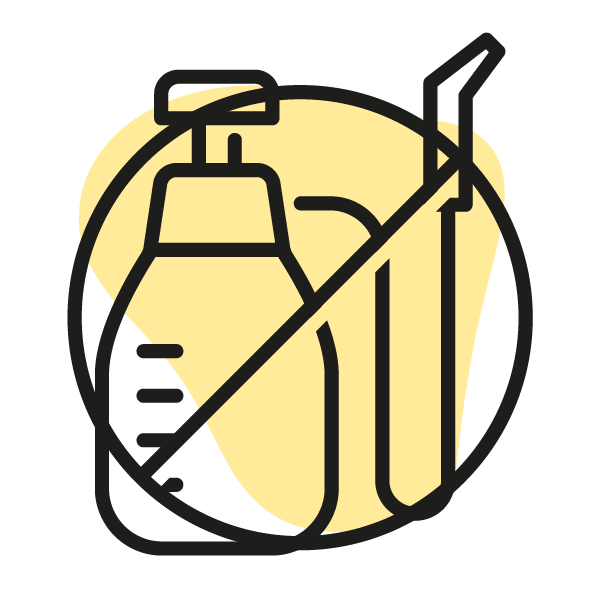
Not only are bees vital to maintaining the produce of many fruits and flowers, but scientists in the Netherlands have now also trained honeybees to rapidly detect Covid-19.
The Washington Post reported that when encountering the scent of the novel coronavirus, bees in the Dutch experiment were conditioned to stick out their tongues (or proboscises).
The researchers claim that such bee detection could achieve 95% accuracy and locations around the globe with limited lab facilities could benefit from such testing methods.
Dutch tech start-up InsectSense is now developing a biochip that would harness the bee genes used to detect Covid, potentially eliminating the need for live bees to do the work altogether.
At least a third of the world's food supplies rely directly on bees for pollination (and that's not even including honey production!)
The majority of fruits, nuts and vegetables are pollinated by bees, and according to Greenpeace, 70 out of the top 100 human food crops – which supply about 90% of the world’s nutrition – are pollinated by bees.
Bees and other pollinating insects, such as wasps, have been calculated to have a global economic worth of around £120bn ($150bn), reports the Independent.
Honeybees are said to be responsible for $30bn of this a year in crops and in the UK alone, pollinating insects are worth around £690m to the economy annually, according to a study by the University of Reading.
However, a third of the UK's wild bee population is in decline and a global study in January 2021 found that since 1990, a quarter of all bee species known to science – totalling around 20,000 – have not been seen, despite improvements and expansions in monitoring efforts.
RELATED: World Bee Day 2021: Digital map tracks native Irish Honeybees
A study in 2019 by conservation charity, Buglife Northern Ireland revealed that 21 bee species in NI are also at risk of extinction unless action is taken.
The report highlighted the need for better recording and monitoring of bee populations, especially in Co Tyrone (the largest geographical county in Northern Ireland).
Anna Hart, conservation officer for Buglife Northern Ireland told BBC News at the time of the report's release that "unless urgent action is taken, we are likely to see the extinction of some of these species over the next 10 years."
Katy Bell from Ulster Wildlife added that across Ireland, "we have 99 species of bee (21 of those are bumblebees, 1 honeybee and 77 solitary bees). Unfortunately over a third of those are at risk of extinction. This is due to loss of habitat, use of pesticides, and tidy gardens!"
Here are the Bee Conservancy's top 10 tips for helping to save and preserve our bee populations.
One of the largest threats to bees is a lack of safe habitat where they can build homes and find a variety of nutritious food sources. By planting a bee garden, you can create a habitat corridor with plants that are rich in pollen and nectar. You don’t need a ton of space to grow bee-friendly plants — gardens can be established across yards and in window boxes, flower pots, and planters. You can also get involved with local organizations and governments to find opportunities to enrich public and shared spaces.

Synthetic pesticides, fertilizers, herbicides, and neonicotinoids are harmful to bees, wreaking havoc on their sensitive systems. Avoid treating your garden and green spaces with synthetics. Instead, use organic products and natural solutions such compost to aid soil health and adding beneficial insects that keep pests away like ladybugs and praying mantises.

Join a global movement to collect data on our favorite pollinators! Gather photos and other information about native bees and upload them to the iNaturalist app. Make it a group activity for friends by hosting a BeeBlitz event! Together, we can learn about the bees in various sites and cities and identify opportunities for nurturing them.

Did you know that bees get most of their nectar from trees? When a tree blooms, it provides hundreds — if not thousands — of blossoms to feed from. Trees are not only a great food source for bees, but also an essential habitat. Tree leaves and resin provide nesting material for bees, while natural wood cavities make excellent shelters. With deforestation and development on the rise, you can help bolster bee habitats by caring for trees and joining tree-planting parties in your area.

Bees work up quite a thirst foraging and collecting nectar. Fill a shallow bird bath or bowl with clean water, and arrange pebbles and stones inside so that they break the water’s surface. Bees will land on the stones and pebbles to take a long, refreshing drink.

Did you know that, with the exception of honeybees, most bees are solitary creatures? 70% of solitary bees live underground, while 30% live in holes inside of trees or hollow stems. Species like bumble bees build their nests in undisturbed land, and you can provide safe haven for them by leaving an untouched plot of land for them in your garden! “Bee condos” — which have small tube “apartments” — allow species like mason bees to take up residence. They’re easy to make or purchase. Our Sponsor-a-Hive program places solitary bee homes in gardens, schools, and communities around the U.S. and Canada.

Keep honeybees, nurture native bees, or help gardens and schools around the U.S. and Canada grow food and strengthen local environments. Our Sponsor-a-Hive program creates safe havens for precious pollinators in underserved communities by supplying the tools, gear, and education needed to successfully home bees. Donate to our program or apply to receive a home for your group or organization.

Inspire the next generation of eco citizens with guides, lessons, and activities to get them buzzed about bees! Educators can use our collection of free resources to bring nature and ecology into the classroom — and the hearts of children everywhere.

Host a fundraiser online or do something you love to help #BeeTheSolution. Your #BeeTheSolution fundraising events create community building and information sharing opportunities that inspire while raising funds for The Bee Conservancy programs. It’s an easy, fun way to make a serious impact.

Local beekeepers work hard to nurture their bees and the local community. The easiest way to show your appreciation is to buy locally-made honey and beeswax products. Many beekeepers use products from their hives to create soaps, lotions, and beeswax candles. Plus, local honey is not only delicious — it is made from local flora and may help with seasonal allergies! You can also give time, resources, and monetary donations to local beekeeping societies and environmental groups to help their programs grow.